Welcome to my blog. This blog is used strictly for educational purposes only. No copyright infringement intended.
Don't wanna be here? Send us removal request.
Text
China Social Credit System
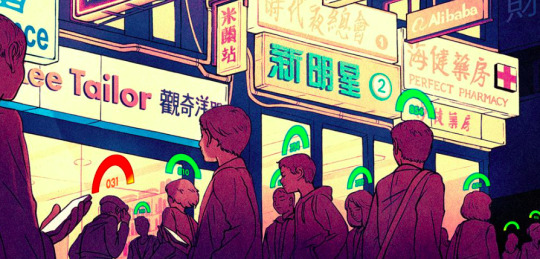
Imagine one day you wake up and realize that from now on you can block anyone you don’t like or have issues with. That’s what happened in white Christmas one of the episodes from Black Mirror.
When I started reading about China social credit system my instincts were that this is like the episode however not just blocking virtually but monitoring as well. A creepy system created by the Chinese government in which they rank their citizens based on their behavior. According to Ma (2018), things which could happen to you if your score was below average would be banning you from travelling, throttling your internet speeds, banning your kids from good schools, not allowing you to get good jobs, no access to high level hotels, take your dog away, being publicly named as bad citizen and many more. Just by reading this one would have chills why would someone do this to their society and whether there are any advantages of doing so.
However, there should be some reason why a population of 1.39 Billion didn’t come out on streets and fight for their rights or was it too late because the system was implemented, and people feared of being banned?
The answer to this question is by looking into what is social credit system and how does it work? The plan was released in 2014, which will be fully implemented by 2020, however government have their own social records systems while the private companies out there such as Sesame Credit collects data based on users payments and many other private platforms which is believed that one day will be maintained by the government or will be halt totally once their system is up and running (Kobie, 2019). The social credit system works with unique identity code for every user which could be keyed in to the system to pull up your records, and the blacklisting will happen depending on the location you’re staying as every place has its own catalogs like some places will even deduct your points for misbehaving on train, standing up a taxi or driving through red light.
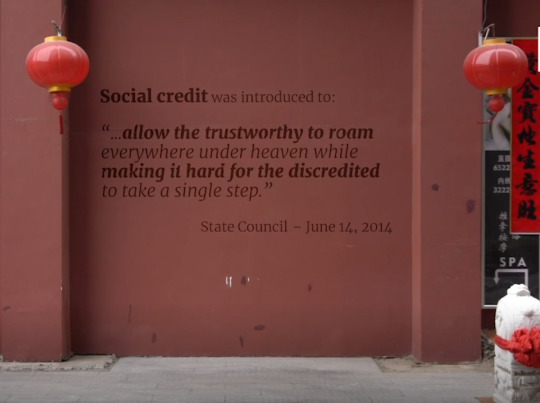
After understanding what is social credit system and how does it work we come back to the main question that why didn’t anyone fight for their rights, after doing some research I believe that the blueprint was created before any such this was unveiled as the program’s official blueprint states that, it will “allow the trustworthy to roam everywhere under heaven while making it hard for the discredited to take a single step” before anything was launched and now its too late to stop the government. The Chinese government is already using frightening technologies to censor the internet, controlling mobile devices with the identity code of the owner, facial recognition in streets as well as in schools to monitor kids, while some parts over the internet mention that in western province of Xinjiang the government is detaining and surveilling millions of minorities, mainly Muslims on an unprecedented scale.

To conclude, I believe that social credit system is just being noticed because it’s happening in China with such large population and if it was trendy in the West it would just be publicized as another high-tech advancement. Chinese government have faith that it will help their society and while we out here call it creepy and only look at its negative side. All of us humans should perform and have positive influence on our society without somebody monitoring us nevertheless, China would be a clear illustration for the rest of us on how things could go dark virtually if one misbehaves or goes against the high-power.

References:
Ma, A. (2018). China has started ranking citizens with a creepy ‘social credit’ system — here’s what you can do wrong, and the embarrassing, demeaning ways they can punish you. [online] Business Insider Malaysia. Available at: https://www.businessinsider.my/china-social-credit-system-punishments-and-rewards-explained-2018-4/?r=US&IR=T [Accessed 1 Dec. 2019].
Kobie, N. (2019). The complicated truth about China's social credit system. [online] Wired.co.uk. Available at: https://www.wired.co.uk/article/china-social-credit-system-explained [Accessed 1 Dec. 2019].
Nast, C. (2019). How the West Got China's Social Credit System Wrong. [online] Wired. Available at: https://www.wired.com/story/china-social-credit-score-system/ [Accessed 1 Dec. 2019].
Jones, K. (2019). The Game of Life: Visualizing China’s Social Credit System. [online] Visual Capitalist. Available at: https://www.visualcapitalist.com/the-game-of-life-visualizing-chinas-social-credit-system/ [Accessed 1 Dec. 2019].
2 notes
·
View notes
Text
Social Gaming

Today we live in a “digital world”, you may have heard this sentence a million times or you may say it yourself when having a discussion and yes, it’s true. The number of devices around us is increasing on daily basis such as smartphones, laptops or any other wearable gadgets which allows us to be connected online.
In easier words, we do a lot of stuff online such as buying clothes, ordering food, sending emails or play games. Remember those times when you use to sit down with your family and play carom board, chess, Ludo or monopoly? Yes, it feels like it’s been ages we sat down like that because now everything we play is online. I myself play chess online or Ludo with my siblings. However, if you look it from a social perspective, internet has kept us connected no matter the distance between you and your friends and suddenly its easier to understand why social gaming is a huge success in today’s world. If we look at the statistics, social gaming market will reach 17.4 Billion US Dollars by 2019 (TMR, 2019).
Nevertheless, a question comes to mind is just playing games or your PlayStation, computer or mobile phone online is considered social gaming or does their need to be some sort of engaging aspect with your friends or colleagues? According to Dixon (2017), it matters that there are other people there, and relate them in some sort in the game play. These games are built using published API’s from social platforms such as Facebook, Twitter or Myspace.
I myself started playing an action game online with my friends named Tacti-cool, a low graphic game where your team needs to secure the money bag from the other team, and I got myself addicted to it and spent 14RM to purchase the golden kit to have better weapons. So, one of the question that bangs up in the head is, what made me spend that money and are gaming communities becoming less about play and more about monetisation?
When you’re playing game especially online with your team mates, you feel like you don’t want to be the reason you let them down and that adrenaline rush you have makes you spend that kind of money when the opponent team is “pay to play”. In today’s social gaming world, I believe its all about monetisation no matter what technique you use, it could either be asking the player to purchase a certain weapon, or kit to upgrade or it could be the annoying way which is by advertisement pop ups.
References:
Ayogo Health Inc. (2019). What Exactly are Social Games?. [online] Available at: https://ayogo.com/blog/what-exactly-are-social-games/ [Accessed 1 Dec. 2019].
Digicult | Digital Art, Design and Culture. (2019). The Insane Growth of Social Gaming. [online] Available at: http://digicult.it/internet/the-insane-growth-of-social-gaming/ [Accessed 1 Dec. 2019].
0 notes
Text
Fan communities & activism

Since the internet has spread worldwide and the immense advancement in the technology sector, throughout these progressions fan communities had thrived (Jenkins, 2006). A long journey from the network readers writing letters to pulp magazines in the early 90’s to chatroom's and online forums, fan communities have increased in number and created a strong structure from themselves.
Today, fans are categorized in different forms such as media fans, sports fan, celebrity fan some being viewers of the content and then others having posters of their idol across their rooms, purchasing merchandise for which an example would be the serious fan following of Justin Bieber known as the “Beliebers”. To understand the fan following on larger scale, in the past five years Marvel have grossed over 140 million USD producing different content such as television series or other comics.
Such content being produced across numerous platforms have diversified and impacted cultures from which the phenomenon came “Aca-fans” mainly known as academic fans. These fans study the fan communities especially for marketing purposes and some believe that they are part of the communities themselves which raised an argument among these communities that they don’t want to be part of a scientific research (Cristofari, 2016). However, Aca-fans continue to research and are a main source of academic research on fandom and fan communities and therefore represent a connection between a large part of the consumer population and decision makers, while from a marketing perspective they are a part of the consumer demographic they are studying.
After understanding fan communities and activism, the question that comes to mind, IS fandom built on psychological mechanisms that are relevant to political involvement? And secondly does government try to persuade such entertainment in its society so that there is no fight for legal rights??
According to Jenkins (2012), fandom is part of a politics as the society is submerged under fantasy and imagination and how the government utilize these moments to gain intense audience investments so that citizenship becomes entertaining. For instance, in 2011 American political leaders and activists were quite concerned when the Presidential candidate Rick Perry was asked by a kid from the audience, which superhero would he like to be, and he replied “Superman” as he saved the United States. However, in the alternate universe “DC”, Superman criticized his American citizenship to have a global perspective. Such times show that fan communities are strongly supported by the governments in order to keep the society and its youth distracted from the real-world problems.
In my opinion, being born and raised in Saudi Arabia and then observing that country transforming in the past three years since the elected Prince, their have been some major changes in that country as the neighboring countries started war for their legal rights, Saudi Arabia started to shut its people by pouring money into the entertainment industry which didn’t even existed three years ago. For example, starting from allowing women driving to BTS performing in Saudi Arabia. The Korean boy group has a major fan in their home country, but surprisingly have a major fan base in Saudi Arabia as the tickets sold out in few minutes and the crowd was singing with the group. BTS face backlash after announcing to perform in Saudi Arabia as the internet went crazy how could UN Ambassadors perform in country where there are no legal rights. In my opinion, its not their fault when one has “dollar eyes”, human rights are not something one would remember or care about.
References:
Cristofari, C. (2016). Aca-fans and fan communities: An operative framework. Journal of Consumer Culture, 17(3), pp.713-731.
DW.COM. (2019). Saudi Arabia: Pop music gains a political conscience | DW | 21.07.2019. [online] Available at: https://www.dw.com/en/saudi-arabia-pop-music-gains-a-political-conscience/a-49679467 [Accessed 30 Nov. 2019].
Jenkins, H. and Jenkins, H. (2012). Up, Up and Away!: The Power and Potential of Fan Activism — Henry Jenkins. [online] Henry Jenkins. Available at: http://henryjenkins.org/blog/2012/07/fandom_is_built_on_psychologic.html [Accessed 30 Nov. 2019].
0 notes
Text
Crowd sourcing & crowdfunding

Two ground-breaking developments known as crowd sourcing and crowdfunding are often misunderstood by the people even though these are two completely different topics and focus on different target market (Reffell, 2019).
The term ‘crowd sourcing’ was coined by journalist Jeff Howe in the June 2006, crowd sourcing is the interaction of “crowd” to focus on a common goal over the internet which is basically solving real world problems, innovating new projects, or something which requires efficiency. Crowd sourcing has been there for a long period of time, for instance in 1714 the British government came up with the idea to have a contest to innovate a device which will allow the sailors to navigate easily during their travels, John Harrison at that time came up with the idea of Marine chronometer and was then awarded cash prize for his achievement.
In today’s world, crowd sourcing happens like the British government initiative but thanks to the internet and its vast number of users, crowd sourcing can now be done very easily as every single one of us can contribute their ideas no matter what’s its impact to the outcome. For example, one of the most used platforms on the internet for crowd sourcing is known as the “Mechanical Turk” where companies post their micro-tasks and “turkers” who are known as the workers on this platform fulfill these tasks for a moderate fee depending on the magnitude of the project.
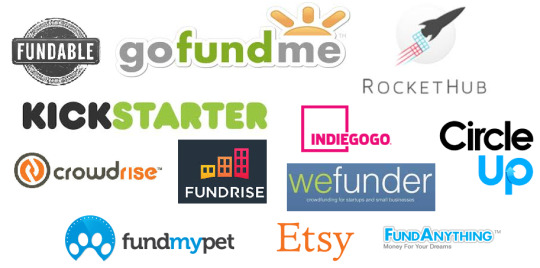
According to Bannerman (2012), crowd sourcing has emerged a new phenomenon known as crowdfunding as both attract the crowd and utilize its power to fulfill its purposes. However, crowdfunding distinguishes in many ways, such as requiring a basic funding to fulfill a projects purpose. For instance, I was impressed by the Zero – Gravity backpack which started its funding on Kick starter, I invested into their product before it came out in the market. A total of 296,000 US Dollars was pledged by 1500 backers. There are tons of investing platforms out there which allows small scale business or provide platform to create ideas.
The question that comes to mind now is will crowd sourcing overtake traditional funding mechanisms for the creative industries? One of the major factors in this scenario is the copyright issues as this can affect the content creator negatively. According to European Parliamentary Research Service, Crowd sourcing comes with issues such as financial, fee issues, national regulations and hacking are the drawbacks of crowd sourcing utilizing web 2.0. However, in my opinion, there are ways to regulate your system for young content creators, who could share their projects and showcase their skill set in any field whether its design, software or hardware and later could receive investment if any company or organization is interested in their work ethics.
References:
Bannerman, S. (2012). Crowdfunding Culture. [online] Wi.mobilities.ca. Available at: http://wi.mobilities.ca/wp-content/uploads/2012/12/sbannermanwi_2012_06_04.pdf [Accessed 29 Nov. 2019].
European Parliamentary Research Service Blog. (2016). Crowdsourcing and crowdfunding in the cultural and creative sectors. [online] Available at: https://epthinktank.eu/2016/02/24/crowdsourcing-and-crowdfunding-in-the-cultural-and-creative-sectors/ [Accessed 29 Nov. 2019].
Reffell, C. (2019). What is Crowdsourcing? | Crowdsourcing Week. [online] Crowdsourcing Week. Available at: https://crowdsourcingweek.com/what-is-crowdsourcing/ [Accessed 29 Nov. 2019].
1 note
·
View note
Text
Trolling & social media conflict

Trolling has existed since the internet era and was seen by the general public in the mid-1996. In Today's reality slang "Troll" is an individual who makes trouble over the Internet by beginning disputes or by posting unfriendly remarks on one's profile. A lift given to trolling was in 2008, from both political and social point of view when the purported "Troll Army" began to post content about the Russian government. A few writers accept that a brought together political trolling framework was made intentionally with a grouping of web laws being affirmed for political purposes and likewise impact brand reputation and its people.
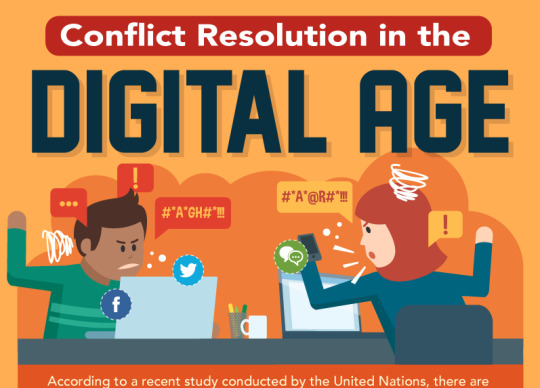
According to Chaffey (2019), there are 4.28 billion internet users around the globe out of which 3.48 billion users are active on social media platforms. Trolling happens on each platform in a different perspective depending on the type of community it attracts. For instance, Facebook will have higher number of conflicts due to the services provided for its users such as videos, status-threads or images. In comparison to Instagram, another purchase by the tech giant Facebook, this platform provides content creators to upload their material online which allows the trolls to criticize one’s content.
Today each one of us has at least account on one social media platform. A survey was taken by our Lecturer in tutorial class regarding how many social media tools do you use daily or signed up once and it turns out that I myself signed up on 43 of these tools and I don’t even use them. Similarly, there are others out there who have a number like mine or less however, we have encountered some sort of harassment or saw someone starting a conflict over social media. For instance, YouTube is pulsating example of how people comment “This video is garbage” or “Why would someone on Earth listen to your song”. Comments like these leads individuals into serious depression and may lead to suicidal thoughts. The argument that comes to rise is if government should formulate social media code of practice for personal use, its impacts and my personal experience.

According to Rainie (2017), there are three types of trolls who stroll around the internet, “The Thinker” who spend time in fabricating stories and provides justifications to the community based on an individual user, “The Zombie Army” who have sufficient amount of time behind the screens and are the top keyboard warriors spreading the content provided by the thinkers. Lastly, “Zealot” goes beyond limits in trolling as they will create content, disturb your close relationships just to make you respond. The question that comes to mind is, why would one spend their time to create content in order to have conflict utilizing social media as their medium?
From my own involvement, utilizing social media platforms especially Facebook allowed me to pass judgement as I fed myself with negative content daily. Content such as “white guy punches pregnant hijabi women”, “black guy getting beaten by NY cops” or other memes related to politics which is quite intriguing made me scroll the feed throughout the day until I realized and made a major shift to LinkedIn where sharing the content has set of ground rules and have to maintain that professional level.
References:
Chaffey, D. (2019). Global social media research summary 2019 | Smart Insights. [online] SmartInsights.com. Available at: https://www.smartinsights.com/social-media-marketing/social-media-strategy/new-global-social-media-research/ [Accessed 21 Nov. 2019].
Rainie, L. (2017). The Future of Free Speech, Trolls, Anonymity and Fake News Online. [online] Pew Research Centre: Internet, Science & Tech. Available at: https://www.pewresearch.org/internet/2017/03/29/the-future-of-free-speech-trolls-anonymity-and-fake-news-online/ [Accessed 21 Nov. 2019].
0 notes
Text
Activism & Protest

Activism is an action that is for a soul purpose which goes beyond the rules and regulations in a basic society. The actions magnitude depends on its medium whether is on radio, social media or rallies. There are various reasons for such event to occur such as equal human rights, opposition defending their stand, global warming or world peace. Activism has played a major role in an ordinary human life for instance, putting an end to slavery, equal rights for the women, labour rights and racism (Martin, 2007). However, a proverb goes by “the same knife that is used to cut apple could be used to kill someone”. In our scenario activism could be utilized to solve major world issues or to start one such attacking the minorities or promoting war.
If we look at the history of activism it has been there since the beginning of time throughout the political system and is continuously being ignored by those who can make any significant change. Activists themselves are not fighting for power but to make a social impact in their society. The same activists that came out in the streets throwing stones at the army, in return receiving rubber bullets is now behind the screens and attacking them utilizing social media platforms. The protests are now happening on a different medium which government are trying to control by blocking and assigning certain punishments if any comments made. The question that comes to mind now is why do activists do what they do and how are the governments trying to shut them in today’s world?
One of the most common metaphors of activism is public protest such as rally, march or public gatherings. According to Sharp (2005), there are three types of stages which takes place, first stage is speeches full of anger and hate, banners, slogans as these methods are basic human rights and or not considered to be illegal. The second stage is nonviolent action, disobeying social customs, boycotting government products and the third stage is like stage two however, violent actions takes place, sabotaging government owned properties such as banks, attacking the government bodies etc.

Today’s youth doesn’t want to get down on the streets but prefer to sit behind their screens and fight for the rights in their safe playground. Platforms such as Facebook and Twitter are being utilized to create social movement but translating these movements into actual policy change is quite difficult (Malchick, 2019). For instance, it took Martin Luther King and his colleagues a decade to spread their message and build strong connections. Nevertheless, in today’s world all you must do is start with something catchy with the correct hashtags to spread your message. For example, the hashtag “BlackLivesMatter” is five years old today but had a major impact on how Americans view social media’s impact. It has set a benchmark for the society to raise their voice for anything that is not acceptable and share that message until big shot notices it and is keen to make changes.
References:
Anderson, M. (2018). Activism in the Social Media Age. [online] Pew Research Center: Internet, Science & Tech. Available at: https://www.pewresearch.org/internet/2018/07/11/activism-in-the-social-media-age/ [Accessed 28 Nov. 2019].
Malchik, A. (2019). The Problem with Social-Media Protests. [online] Available at: https://www.theatlantic.com/technology/archive/2019/05/in-person-protests-stronger-online-activism-a-walking-life/578905/ [Accessed 28 Nov. 2019].
Martin, B. (2007). Activism, social and political. [online] Bmartin.cc. Available at: https://www.bmartin.cc/pubs/07Anderson.html [Accessed 28 Nov. 2019].
Sharp, G. (2005) Waging nonviolent struggle. Boston, MA: Porter Sargent.
1 note
·
View note
Text
Political Engagement
Political engagement can be in various forms which includes an individual voting, supporting their party or leader in monetary terms or even working for the campaign. According to PEW research center of United States, attending a campaign event is also measured as political engagement. That’s the definition of political engagement but the question that comes to mind is whether politics is just about governing people or is it more than that?

In order to understand this topic, we will focus on Pakistan and the political issues and engagement it is facing since the new Prime Minister Imran Khan was elected. When we talk about politics with today’s youth most of them don’t have enough knowledge of what’s going on as they are too busy with other activities or its too boring. Pakistan possesses one of the largest populations in the world and out of 180 million individuals, 59 percent is below age 24.
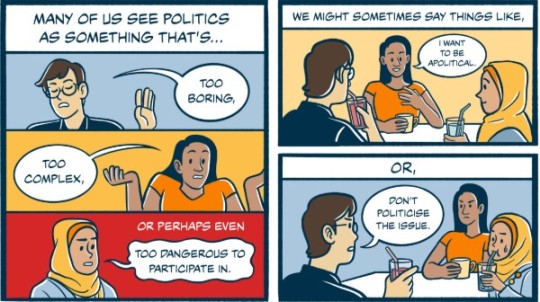
According to United Nations Development Program (UNDP), youth participation in politics is the backbone of one society. Since Imran Khan was elected as the new Prime Minister, there has been a significant increase of 46% in youth engagement in politics as this was his moto to engage and make the youth believe in the system once again. However, the youth today engages in politics in a totally different manner which is by utilizing social media at its peak by tweeting, uploading status on Facebook, going live via social media platforms and this is what is to be considered as a positive approach by the leaders or individuals with high power. A study conducted by Dean (2004) in Pakistan originate that Pakistanis as a nation have a few factors which makes them engage in politics which are sharing a common culture, being patriotic about their country due to the uprising issues with the neighboring countries and sharing a common religious identity.
One of the rising issues in the country is due to the amendment of Article 370 which confers special political status on Jammu and Kashmir and bifurcating the State into two Union Territories. The majority in Kashmir is Muslims however passing this law allows power to Hindus over Muslims which the youth refers as “holocaust”. Imran Khan at this stage gave a speech at the United Nations (UN) to wake up and fulfill their purpose and requested Donald Trump to engage with India as both countries are nuclear power, and this have a negative result on the rest of the world.

References:
Yusuf, M. (2011). Youth and the future, in Cohen, S. Pakistan’s future. Washington, DC: Brookings Institution Press.
Dean, B. L. (2004). Pakistani conceptions of ‘citizenship’ and their implications for democratic citizenship education.
1 note
·
View note
Text
Is Tumblr a blog or a social network site?
Tumblr, one of the most popular micro-blogging platforms out there in the social media industry has gained immense popularity in the past few years once it was purchased by Yahoo in 2013. Within 6 months, Tumblr had over a million users and 73 billion posts made, while the analytics quantified that Tumblr main users age group is from 20 years to 25 years old.
From a geographical perspective, Tumblr has gained a huge market in the United States being the 2nd most utilized micro-blogging platform by influencers from various backgrounds whether being fashion, lifestyle, music or just utilizing as social media. In contrast to the momentum Tumblr gained since Yahoo, the question that arise is whether Tumblr is blog or social media network and for me it comes down to one conclusion which is, how do we differentiate blogging from social media in today’s world and what is our idea behind it.
According to Nardi (2004), blogging platforms such as Blogspot and Live Journal has decent and high-quality users however fewer social media interactions. The reason to this due to users utilizing these platforms for personal communication and expressing their daily lifestyle. However, on the other hand platforms such as Facebook and Instagram who have tremendous number of users and great social media interactions have lower quality content uploaded on daily basis in comparison to blogosphere.
There is one platform out there which has been so-called the best micro-blogging platform over the internet and that is Twitter however my opinion is different coming back to the question asked in the beginning, how we distinguish blogging from social media and what’s our idea. My idea of differentiating is from a technological perspective, how one platform is allowing its users to communicate among each other. Twitter allows its users to key only 140 characters in each post and secondly the relationship on this platform does not require to be communal which in my point of view makes it a social media platform not for blogging.
Coming down to Tumblr, which also posed as the micro-blogging platform. One of the key differences between Twitter and Tumblr is that Tumblr doesn’t have restriction on the number of characters per post and it also supports multimedia posts such as videos, images and quotes unlike Twitter and in my opinion, this makes Tumblr the perfect fit as a blogging platform not a social networking site.
References:
MacMillan, D. (2009). Social Media: The Ashton Kutcher Effect. [online] Brandkeys.com. Available at: https://www.brandkeys.com/archivepress/050309%20BusinessWeek%20Ashton%20Kutcher%20Effect.pdf [Accessed 29 Sep. 2019].
Nardi, B. (2004). Why We Blog. [online] Cacm.acm.org. Available at: https://cacm.acm.org/magazines/2004/12/6358-why-we-blog/abstract [Accessed 29 Sep. 2019].
Yi Chang. (2014), (2014). What is Tumblr: A Statistical Overview and Comparison. [online] Available at: https://sci-hub.tw/https://dl.acm.org/citation.cfm?id=2674030 [Accessed 29 Sep. 2019].
2 notes
·
View notes


